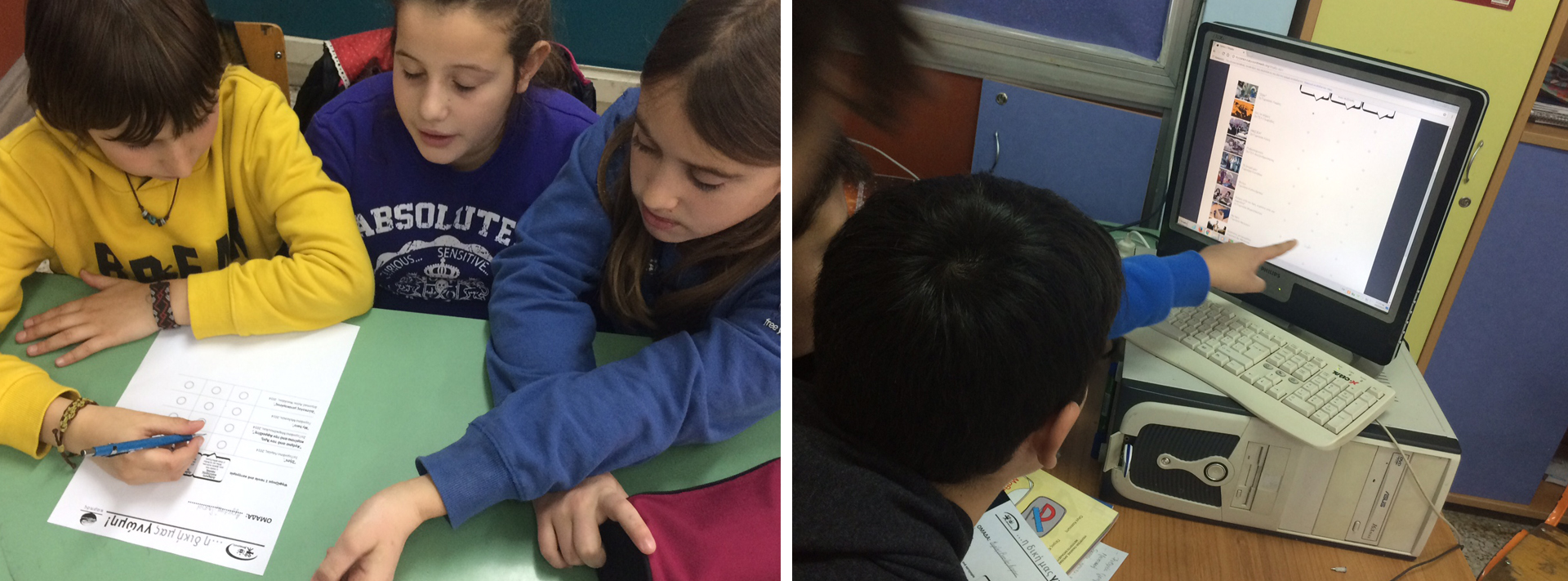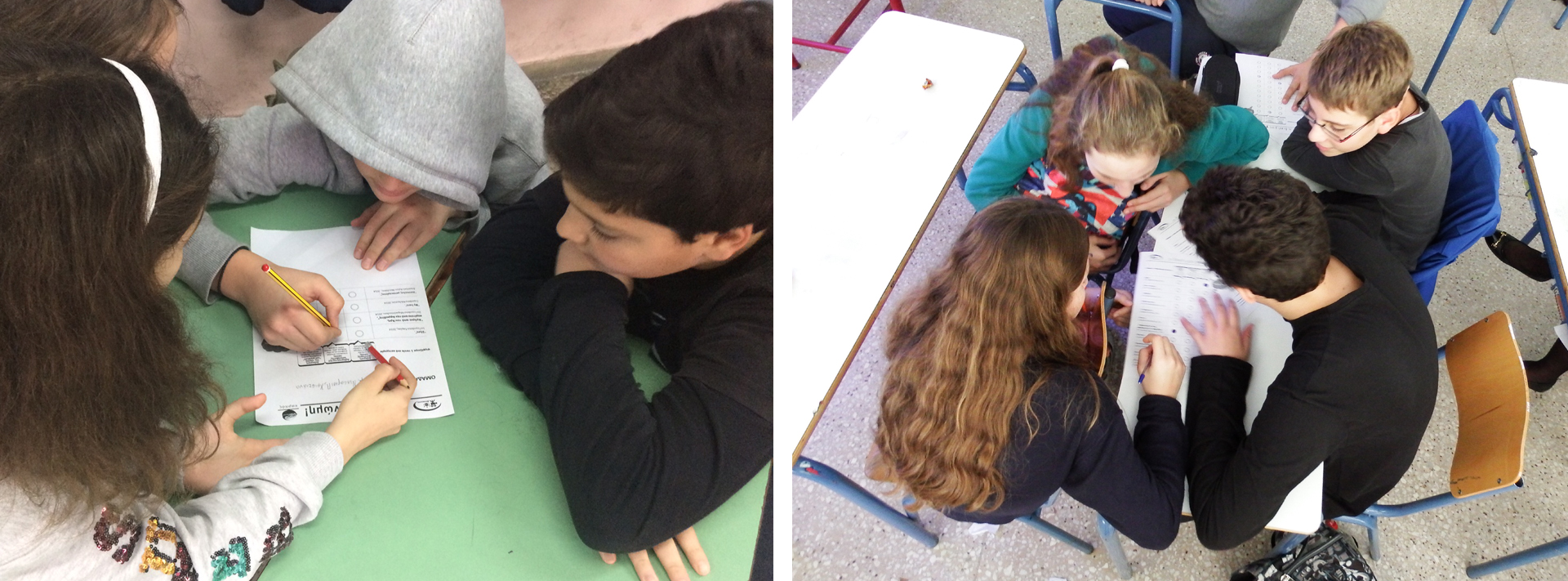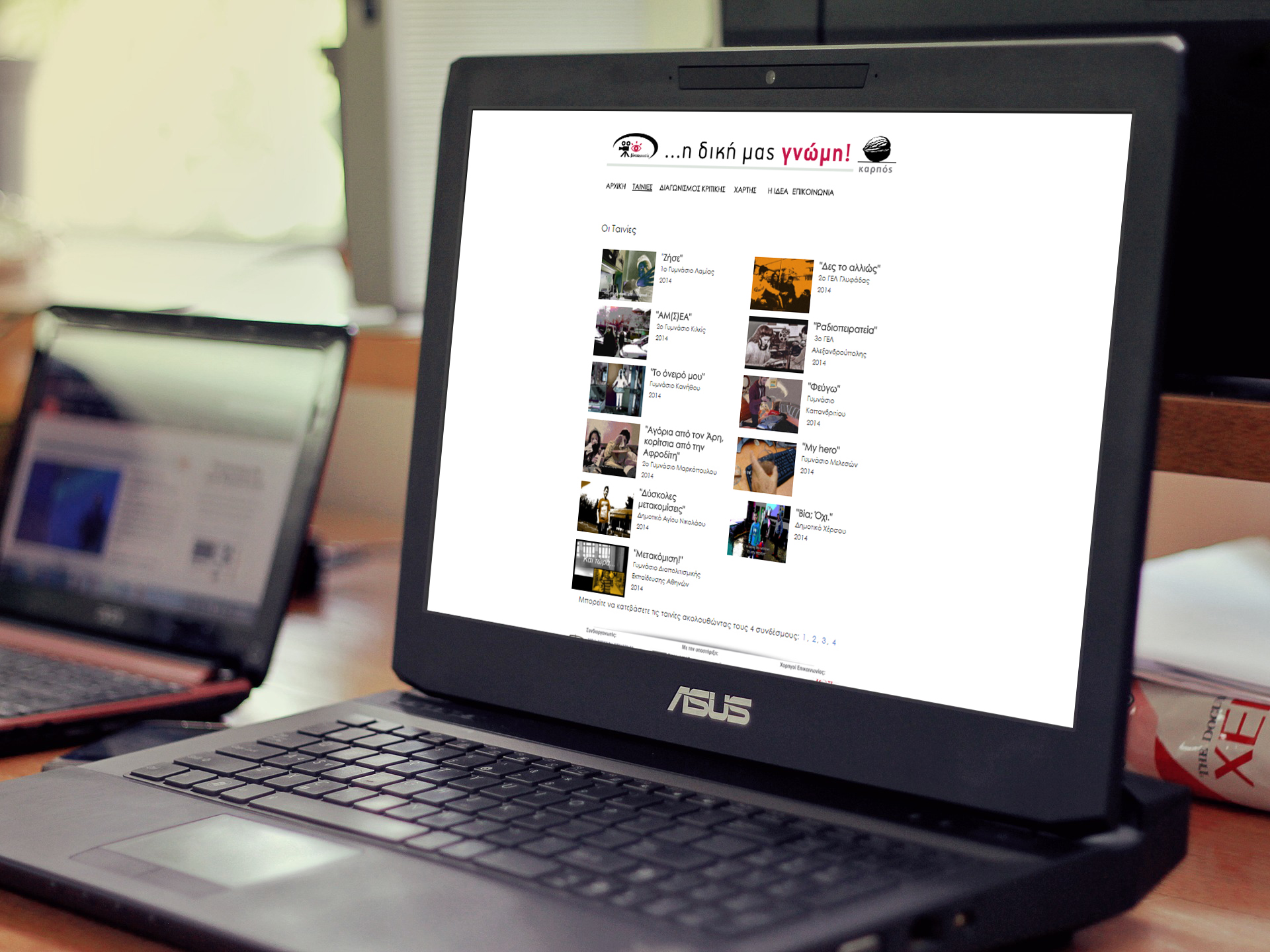In My Own View
Title of the activity/project:
In My Own View
Organising institution/partners:
Karpos, Centre of Education &Intercultural Communication, Non Profit Company In collaboration with Educational TV, Ministry of Εducation and Greek Film Centre
Country:
Greece
Hashtags (key words)
#critical viewing, #film critique, #nationwide screening, #media education, #youth video productions
Main topic/Theme Nationwide:
video screenings, making comments, arguing, voting, and writing a film review

Media Literacy Competencies/ Aims/ Expected outcome (individual and social impact, challenges, risks):
Αims: • collective viewing of films in a darkened hall (the concept of cinematic projection) • providing the same experience to different student audiences with different cultural characteristics, in different places (the concept of film distribution and of common experiences shared by different people) • critical viewing enhanced through collective, online voting for virtual nominations • development of arguments within each groupto support the group's voting • oral and written expression about a media text • understanding and respecting one’s own view in relation to other peers’ opinions • publicizing of voting through an internet online platform to encourage further discussions • reflecting on students'written texts as an additional educational tool for language expression
Outcomes: An online platform which would function as a trainer guide and where all voting results are collected in real time. Participants would be able to find out other groups’ final choices. Thus, a further stimulus for discussions would be offered. In addition, two publications (both printed and online) would present 1.the nominations and 2.an anthology of phrases and paragraphs from all submitted critiques that would really be worth noting.
Impact, challenges, risks: In this project, young audiences are encouraged to differentiate among films screened and collectively vote according to certain criteria. Through simple questions, students are invited to consider certain film qualities and characteristics. This promotes argumentation and criticism about media language in general. These simple questions raise an awareness of the different layers and nuances that exist in a media text, moving away from stereotypic judgements (such as “ first, second” or "best film", "best script" etc. or "I like", "I don't like"). They also place the young viewers in different roles (peer, new generation, viewer with his/her own rights) while collective voting requires in-group argumentation about the specific films. So they are encouraged to replaceroutine judgements with some more interpretive aspects about each film. On a second level, watching other students’ films on issues of identity, reflecting a variety of geographical and social origin, enhances their cultural differentiation and understanding. The films invite the viewers to realize common and different aspects of their own everyday life and compare it with that of other students. Through the platform they become aware of other participants’ (often in remote areas) preferences. They experience their differing views regarding the very same films. On a third level, students who decide to write a review, exercise a considerable number of critical skills: critical viewing, recognition of the various elements that constitute a media narrative, evaluating and building arguments based on specific examples from a film, expressing publicly one’s personal views, prepare to be exposed to a wider audience through the contest and share common interests and views with other people whom they have never met. Finally, the publication of the film critics, offers an elegant and constructive reference for other students and their teachers showing that a media text can be discussed both about its point of view on an issue as well as about its form, style and structure.
General Pedagogic Objectives:
To develop critical thinking, after watching a youth video and open a discussion about their own, potential media production as well as to offer a critical tool for trainers to promote argumentation and criticism about media in general.
Participants – age:
11-17 years old
Participants – number:
From 10-40/ (or any kind of group fitting a local screening situation and discussion)
Participants – entry competencies/skills:
none
Methods/Type of activities:
Groupwork, collective screening, discussion, critical thinking, collective voting process, writing a film critique, organizing a competition
Description – step by step:
1. Viewing films in a cinema-like environment.

2. After viewing a set of short youth productions on youth culture, students,in small groups,discuss and decide their group's own view in each of the three elementary questions described below: Which of the films screened would you: 1. choose to show to your friends? 2. consider as most suitable for adults' taste? 3.characterise as the weirdest film? (the one you need to discuss or ask something about). The voting process is based on an online platform (https://goo.gl/3CsTqj) which functions as a guidance area for the teacher and where all voting results are collected. The statistics are dynamically affected by each group's votes in real time. Students and teachers are able to find out other schools’ final choices. Thus, a further stimulus for discussions is offered.

3. A third phase of the project is a Review Writing Competition: individual students may choose one of the videos to write a review about. The platform provides detailed guidelines about how to write a film-review. Its content, structural elements and artistic features are discussed. The reviews are then judged by a committee including film directors, media educators, film critics, writers and school teachers.

Resources:
time/duration Time-duration:1.30 hours screening/ discussion/ voting Critique writing:1.30 hours or personal homework
Venue/place, equipments, materials, human resources:
Venue/place: room allowing some darkening for projection
Equipment: projector, sound speakers, pc for voting online, pencil and paper, printer, consumables/ cloud space or youtube channel etc.
Human resources: Administrators-coordinators PR-Communication of action Graphic designer for printed materials (posters, flyers etc.) Reviews Publication Editor Evaluation expert Judging Committees
Evaluation (feedback from participants, selfevaluation, certification for participants):
The project will constantly be evaluated through the feedback from the participating trainers, as there will be an open communication with the groups involved. Using telephone, e-mail, close Facebook group or another online platform, trainerscan send queries as well as comments and impressions. We also suggest interviewing some students and teachers, for a short video. An online questionnaire could be addressed to all participating teachers.
Hints for the facilitator:
Films should be chosen to have a common thread (e.g broader theme, scope of youth made videos etc) All short, preferably similar in duration. A set of films can easily address 11-15 or 13-17. Some films however might not match 11 and 17 year olds at the same time! Younger audiences appreciate often older youth concerns. But mature teenagers appreciate only if a film by younger ones is humorous or cute or very truthful.
Further information (links, videos):
http://myopinion.karposontheweb.org/
http://www.karposontheweb.org/my-opinion/?lang=en
https://www.youtube.com/watch?v=C5PFN5CBq_Q
Contact:
Karpos - Centre of Education and Intercultural Communication
Maria Leonida, Menis Theodoridis
Leoforos Kifisias 180,Chalandri, Athens
15231 +30 2130435978, +30 6949404003
info@karposontheweb.org
The publication was created as part of the project: EMELS
This publication reflects the views only of the author, and the Commission cannot be held responsible for any use which may be made of the information contained therein.

